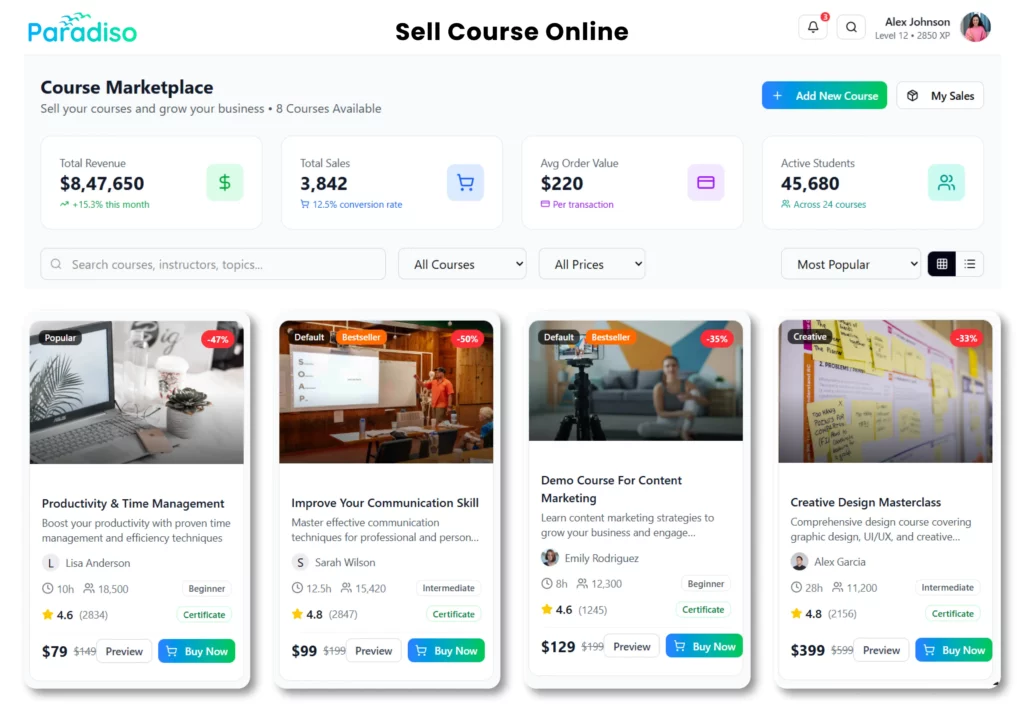Nowadays, employees want their company to give them opportunities to learn and grow. And it’s not only beneficial for them; it’s also significant for the organization. When an organization’s education programs fulfill their business objectives, employees stay longer, work harder, and are more lucrative.
Your organization may have discovered a way for employees to stay updated, but sometimes it’s rare to observe how it’s effectively supporting the business and development. So, let’s discuss how organizations can effortlessly bring change for employees and the company.
Why Continuing Education is a Top Priority for Modern Workers?
Higher education has become gradually unachievable due to the fast-growing cost of teaching. Even those pursuing a traditional degree sometimes have overwhelming debt and need help to pay beyond the interest, resulting in a persistently high loan balance.
The condition is mainly tricky for the 20% of apprentices who start college but still need to finish their degree. They are left with a debt-to-income ratio that is challenging to regulate and fail to recognize the benefits of having a degree.
After seeing these difficulties, it is not shocking that several employees are fascinated by organizations that provide debt-free teaching and continuing education. Employers that deliver such advantages establish a commitment to their employees’ professional development and profit from a more systemized and engaged workforce that is supplied to fulfill the needs of a fast-changing business environment.
What are the possible difficulties organizations face in continuing education?
Many companies offer education programs to their employees, such as paying for college classes or training workshops. These programs are designed to help teams improve their professional skills and work performance. Though, some of these events are not planned in a way that creates them effortless and cost-saving for all employees to access and profit from. In this blog, we will discuss some possible difficulties organizations face when delivering beneficial education programs for their employees.
Accessibility Gap
Sometimes, organizations organize learning and training events for their employees. Though, these programs can be challenging to access for some individuals. It is because several companies prefer a system where staffs have to spend for the education upfront and then gain a refund later. But not everybody can have enough money to pay for their higher education. It indicates that individuals who have more money are more expected to be capable of taking benefit of these programs. As an outcome, this system is not fair for everyone.
Insufficient Learning Options
Corporate training programs often need more learning options for employees with varying educational backgrounds. For example, individuals come from different academic qualifications; some may be completed a four-year degree course, while others may struggle to pursue their schooling or diploma to get a professional certification. Therefore, fruitful learning programs must provide various possibilities to support employees at different stages in their educational path.
Unclear Career Pathways For learners
Corporate training programs face the challenge of providing employees with a clear pathway to career advancement, essential for motivating workers to participate in educational programs. In addition, employees seek a tangible return on their investment in time and effort, whether through promotions or acquiring new skills that enable them to thrive in their current roles. Hence, organizations must align their educational initiatives with existing career pathways to ensure that each learning hour feels relevant to employee success.
Benefits of Employee Continuing Education
Implementing a continuing education program to engage your employees can yield several advantages for your organization. These advantages comprise:
Increased Productivity through Enhanced Engagement
Studies have demonstrated that providing learning opportunities can boost employee engagement, a crucial driver of productivity. Engaged employees can be up to 44% more productive than their disengaged counterparts, and 80% of workers say they would feel more involved with better training and development options from their employer.
Better Skill Gap Management
As technology evolves rapidly, upskilling and reskilling are essential to maintain a versatile workforce. Nonetheless, 87% of companies have reported current or anticipated skills gaps. An effective employee education program can address these vital needs by providing diverse learning options that can bridge the most significant skills gaps within the organization, including degree programs, professional certifications, and short-term training courses.
Maximized Employee Lifetime Value
Investing in education opportunities provides some of the highest returns on employee lifetime value (ELTV). When employees learn on the job, they are more engaged and likely to remain with the company longer, resulting in a domino effect. During this time, the abilities they acquire from learning can help them be more productive and contribute more to the organization.
Methods to deliver effective workforce education to increase Employee Morale
Aligning Learning Options with Career Development
When you ensure that your employee education program is effective, you must align the learning options with the career paths and skills in demand in the competitive market. In addition, you should focus on offering opportunities that directly match the skills needed in your organization. By doing this, you can help your employees to acquire the skills that can lead to career advancement opportunities within your company.Prioritizing Accessibility in Workforce Education Programs
To ensure employee engagement in learning programs, accessibility must be a top priority. It involves investing in continuous support throughout their learning journey, from program selection to completion. Adopting a fully digital delivery mode can also increase accessibility by allowing employees to access coursework at their own pace and in the format that suits them best.Promoting Program Awareness and Engagement
Promoting awareness and engagement is crucial to the success of your education program. To ensure your employees know about the initiative, use internal communication channels such as email to spread the word. Additionally, it is essential to train managers to discuss the program with their teams and provide guidance on how they can easily highlight the program’s benefits, including the level of support offered to employees who enroll.The Role of Paradiso LMS in continuing employee education
Continuing employee education, mainly with the support of an appropriate LMS Platform, Like Paradiso LMS, helps make this continuing learning process effortless, cost-effective, and advantageous for your employee’s progress and the complete success of your company.
Final Thoughts:
In today’s workforce, providing employee learning opportunities is essential for recruitment, retention, and advancement. For organizations, investing in a strategic workforce education program through Paradiso LMS can sustain the company’s long-term profits. Recognizing the potential impact of continuing education for employees and making it a critical aspect of your corporate strategy can drive company growth and acceleration. Refrain from viewing education as a cost line but as an opportunity to invest in your employees and your company’s future with Paradiso LMS.
Visit our site for a free trial and see how Paradiso LMS can help you enhance your institution’s continuing education.














